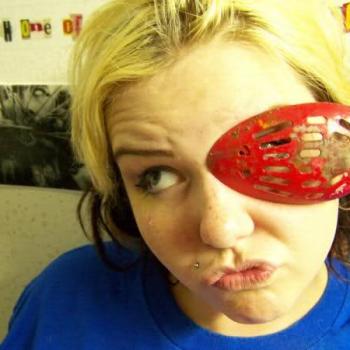Another argument from design, this time from Richard Swinburne, a theologian at Oxford University and author of the book Is there a God? Swinburne is featured in a PBS documentary (Closer to Truth: Cosmos, Consciousness, God) – the same documentary that earlier brought us the thoughts of Robin Collins (see It’s no surprise that the universe is habitable)
As with Collins, Science and Religion Today provides some space for Swinburne to summarize his case. Now, Swinburne is a top theologian, so it should be pretty robust, right? Let’s take a look…
First off he reminds us that there is a lot of order to the universe – things seem to happen quite neatly. He accepts that this isn’t a total surprise, of course (we wouldn’t be here to wonder about it otherwise). And as any weatherman can tell you, there’s an awful lot of chaos out there too. So far so hum.
It’s then that he drops his clanger:
An explanatory hypothesis is probably true insofar as it is simple and leads us to expect otherwise unexpected data.
This is an extraordinary claim! It seems to be a mangling together of Popper’s idea that falsifiability is at the heart of how we understand the world around us (i.e. the scientific method), and Occam’s razor.
Falsifiability is a powerful tool to separate truthful ideas about how the world works from mistaken ones. But the key to falsifiability is not simply that a hypothesis ‘leads us to expect otherwise unexpected data’. In fact, a true hypothesis should make some prediction about what will happen in the future that we wouldn’t otherwise have been able to predict. And, crucially, we then have to go out and observe this prediction, and see that it comes true. Russell’s Teapot may well exist somewhere out there near the orbit of Mars, but it’s a prediction that’s utterly inconsequential (and therefore unscientific) because we have no way of observing it. It’s a hypothesis that’s not falsifiable.
Occam’s razor, on the other hand, tells us nothing about what’s true or not. What it does say is that, faced with two hypotheses that explain the observable data equally well, we should stick with the simplest one until we get some new data in. It doesn’t mean the simplest explanation is true. In fact, it often turns out that the explanations are more complicated than we first thought. But what it does say is that you shouldn’t confabulate complex theories unless there’s a practical reason to do so.
Together, these two ‘rules of thumb’ are a fantastic guide to sorting out the duff from the sublime. Swinburne’s version, however, leads us into a kind of madness.
For example. The sun rises every day. Now that’s pretty unexpected – all things being equal you’d expect it to stay in the same place. So here’s a hypothesis: it’s pulled round by a giant invisible turtle. That’s pretty simple, right? After all, I wrote it in only 8 words. It’s a simple hypothesis that leads us to expect the unexpected. By Swinburne’s argument, that must mean it’s probably true!
But of course it isn’t true. In fact it’s a stupid hypothesis. The reason it’s stupid is that only ‘predicts’ what we already knew. So it doesn’t increase our power to explain the world. And it falls foul of Occam’s razor because it’s invented a new entity – the turtle – but not actually helped us to explain and understand the world. We would be better off without it.
Keep that turtle in mind as you read Swinburne’s article.













